
As a parent, it’s always concerning when your child develops a skin condition, especially one that is contagious. One common infection that many children face is impetigo, a bacterial skin infection that is often seen in young kids. While impetigo is not usually dangerous, it can spread quickly and cause discomfort for your little one. Understanding what impetigo is, how it spreads, and how to treat it will help you feel more confident in caring for your child.
What Is Impetigo?
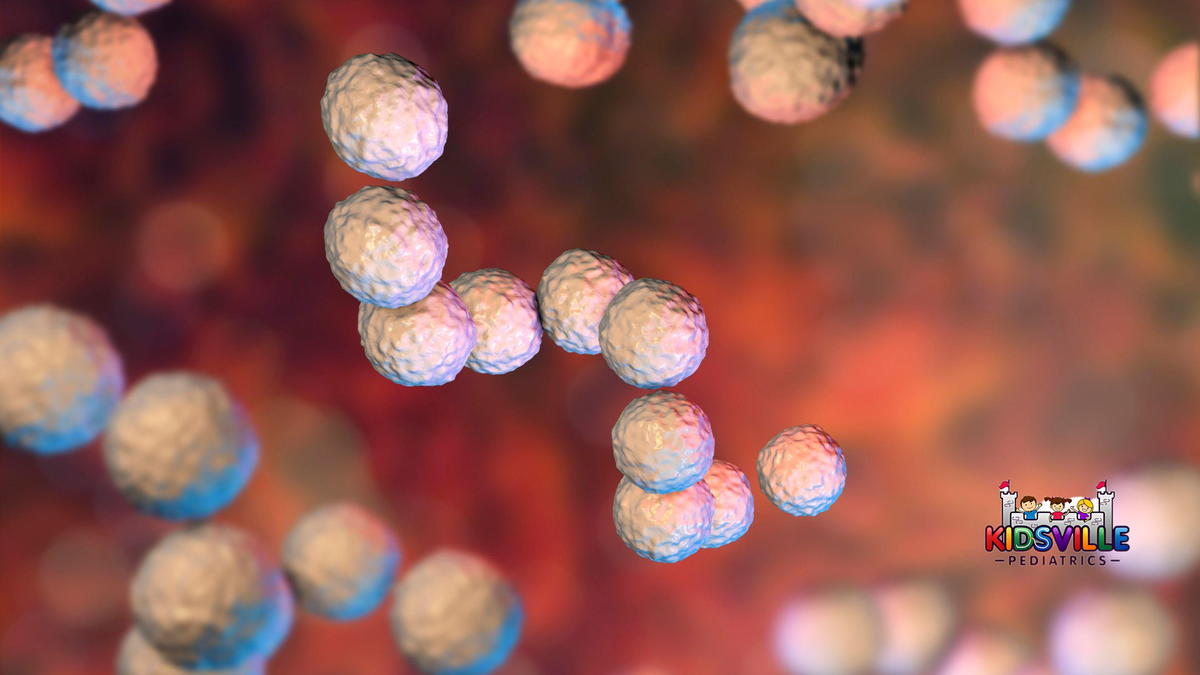
Impetigo is a skin infection caused by bacteria, and it’s one of the most common infections in young children, particularly those aged 2 to 5 years. The infection typically starts with red, itchy sores around the nose and mouth, but it can spread to other areas of the body. Impetigo may be more common in kids but it can also affect adults.
The infection is caused by two main types of bacteria:
Streptococcus pyogenes – The same bacteria that causes strep throat.
Staphylococcus aureus – Often found on the skin and in the nose, this bacteria can lead to a variety of skin infections, including impetigo.
Once your child’s skin is exposed to these bacteria, it can result in the classic impetigo sores, which eventually form a yellow or honey-colored crust.
How Does Impetigo Spread?
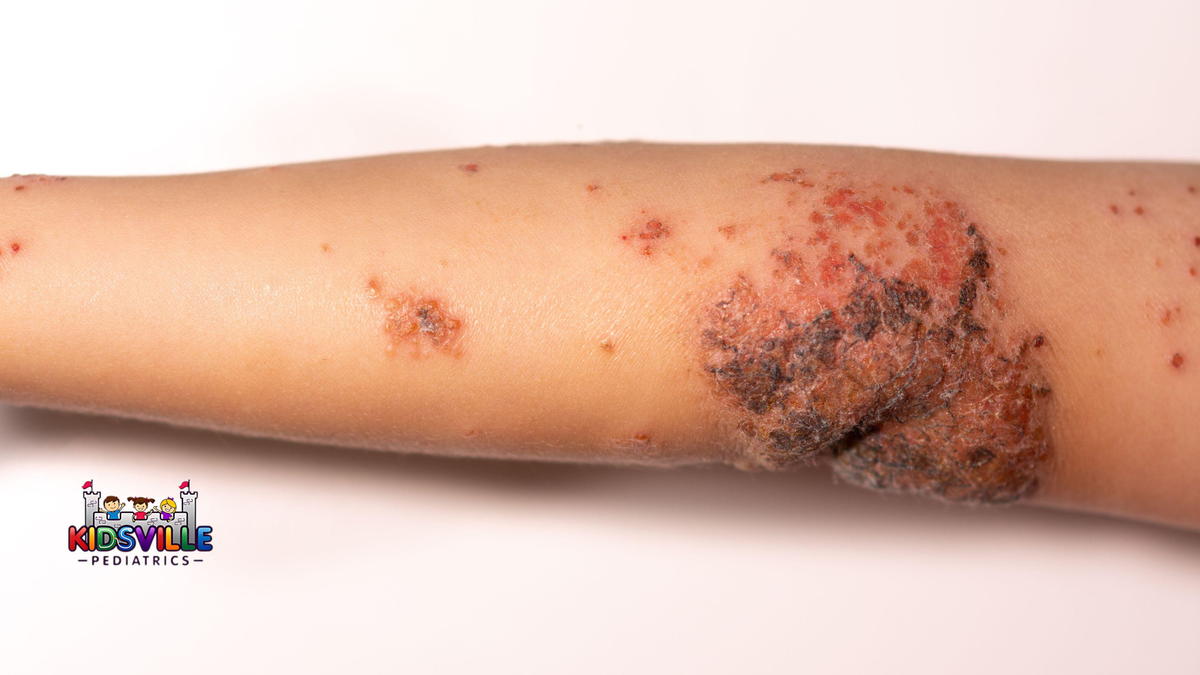
One of the reasons impetigo is so common in children is because it spreads easily. Kids tend to play closely with one another, and their immune systems are still developing, which makes them more susceptible. Here’s how the infection spreads:
Direct skin-to-skin contact: Your child can catch or spread impetigo by touching someone else’s infected skin.
Contact with contaminated objects: Items like towels, toys, bedding, and clothing can carry the bacteria, making it easy for the infection to spread.
Scratching the sores: If your child scratches their impetigo sores and then touches their face or other people, it can cause the infection to spread.
Because of its contagious nature, it’s essential to take steps to limit contact with others when your child has impetigo, especially in places like schools, daycare centers, and sports teams. If you’re concerned about your child’s impetigo symptoms, don’t hesitate to reach out to Kidsville Pediatrics McKinney for expert advice on managing the infection.
Impetigo Symptoms: What to Look For
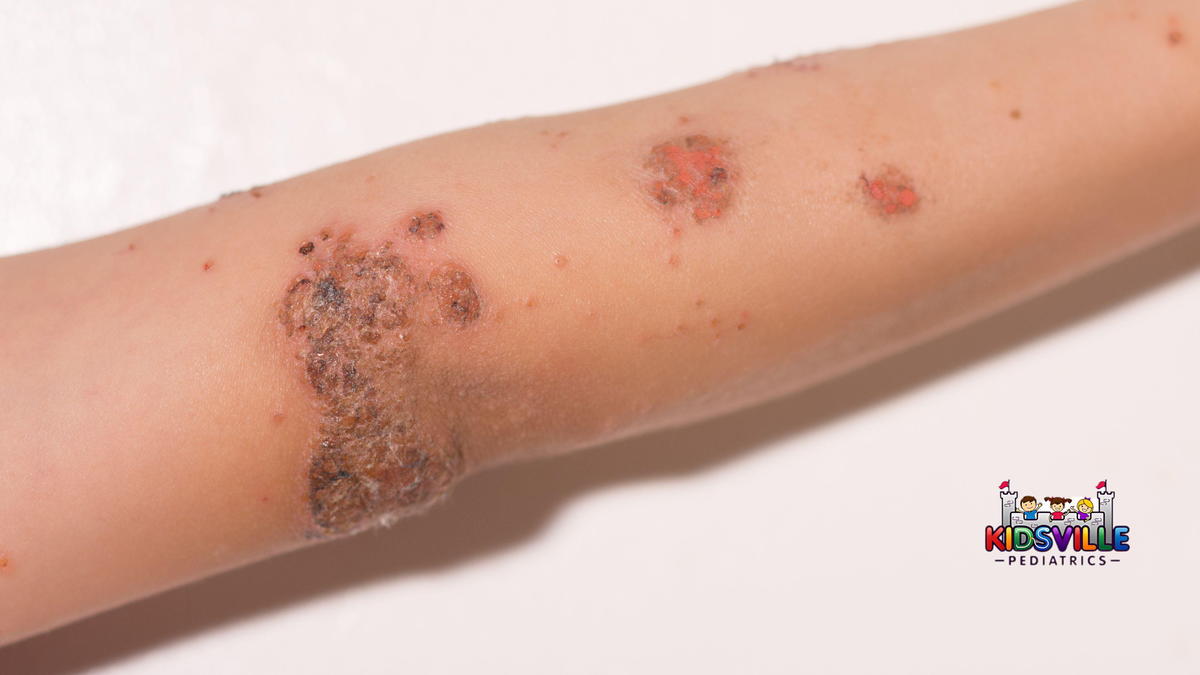
If you notice red sores or blisters on your child’s skin, it’s important to keep an eye on them. Impetigo symptoms can start off mild but become more noticeable as the infection progresses. Common symptoms include:
Red, itchy sores: These usually appear around the mouth, nose, or on the limbs.
Blisters that burst: The blisters may break open, leading to the formation of a thick, honey-colored crust. This crust is one of the defining characteristics of impetigo.
Itching and discomfort: Your child may feel itchy, and the sores might be painful to touch.
Swollen lymph nodes: In some cases, impetigo may cause the lymph nodes near the affected area to swell.
Mild fever: While it’s not always the case, some kids develop a fever, particularly if the infection is widespread.
If your child has these symptoms, it’s important to contact a healthcare provider to get a diagnosis and begin treatment. McKinney pediatricians can offer a comprehensive evaluation and treatment plan for your child.
Types of Impetigo
There are two main types of impetigo, and while they are both caused by bacteria, they can look slightly different:
Non-bullous impetigo (the more common type): This type of impetigo begins with small, red sores that develop into fluid-filled blisters. The sores eventually break open and form a thick, honey-colored crust. Non-bullous impetigo usually appears around the nose, mouth, and other areas of the face.
Bullous impetigo (less common but more severe): Bullous impetigo is marked by larger, fluid-filled blisters. These blisters may rupture, leaving raw skin behind. This form is often caused by Staphylococcus aureus, and while less common, it can be harder to treat and may require different medications.
If you're unsure which type your child has, pediatrician McKinney experts are there to help guide you through the diagnosis.
How Is Impetigo Diagnosed?
If your child has sores that look like impetigo, the first step is to visit your pediatrician. They will typically diagnose impetigo based on the appearance of the rash, particularly if it’s near the nose or mouth. In some cases, the doctor may take a sample of the fluid from the blisters to confirm which bacteria is causing the infection.
If you suspect your child may have impetigo, don't hesitate to schedule an appointment with Kidsville Pediatrics, where we provide thorough assessments and treatment options.
Impetigo Treatment: How to Help Your Child Recover
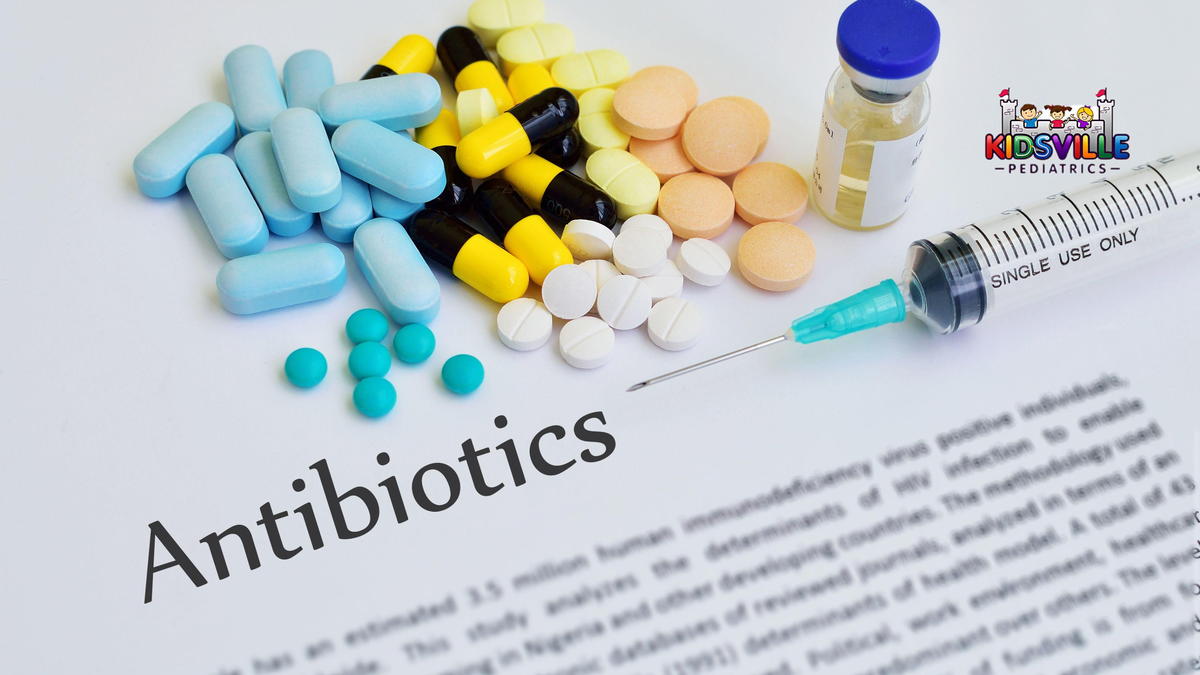
The good news about impetigo is that it’s treatable, and with the right care, your child can start feeling better in just a few days. Impetigo treatment typically involves antibiotics to help clear up the infection and prevent it from spreading.
Topical antibiotics: If the impetigo is mild, your child’s pediatrician may prescribe a topical antibiotic ointment, like mupirocin (Bactroban) or retapamulin (Altabax). You’ll apply this directly to the infected areas of your child’s skin.
Oral antibiotics: If the infection is more widespread or the bacteria causing it are harder to treat, your child may be prescribed oral antibiotics, such as cephalexin (Keflex) or dicloxacillin. These are taken by mouth for about 7 to 10 days.
Kidsville Pediatrics McKinney will walk you through these impetigo treatment options, ensuring your child receives the care they need to recover quickly.
Home Care Tips for Impetigo
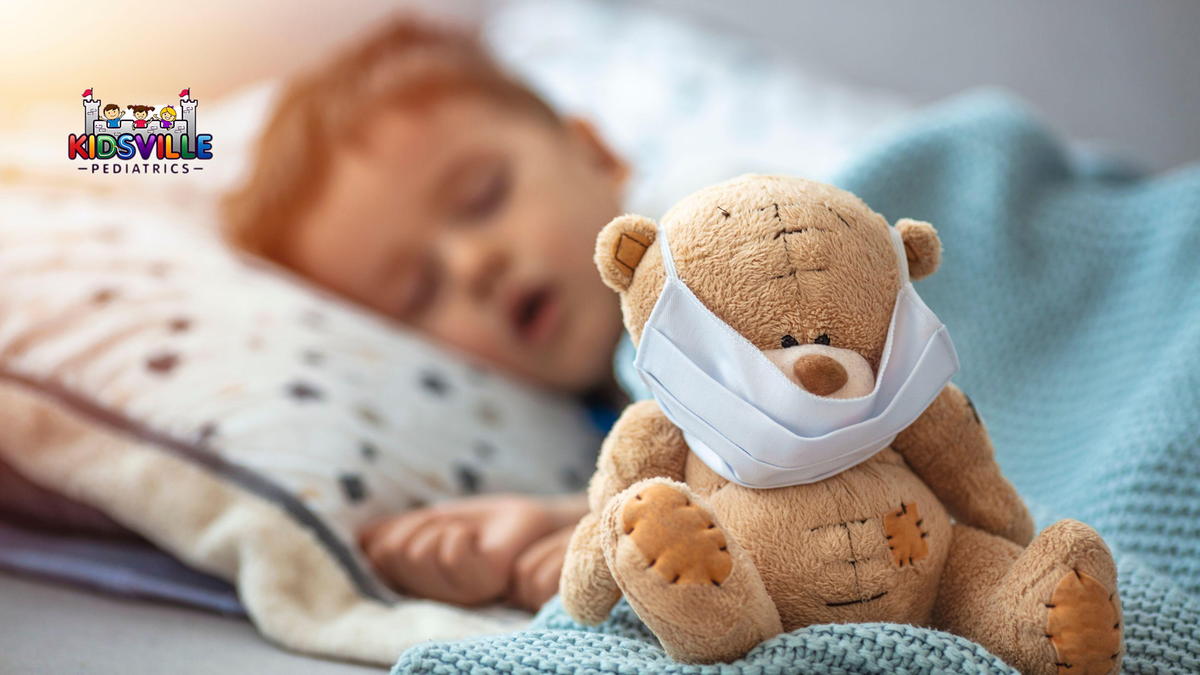
In addition to medical impetigo treatment, there are some things you can do at home to help your child recover and prevent the infection from spreading:
Keep the affected areas clean and dry: Gently wash the sores with soap and water. Apply the prescribed antibiotics to the infected areas.
Use separate towels and linens: Make sure your child uses their own towel, pillowcase, and clothing to avoid spreading the infection to others.
Avoid sharing personal items: Things like brushes, combs, and toys can carry the bacteria, so make sure your child does not share these items with others.
Keep your child at home: Since impetigo is highly contagious, it’s important to keep your child home from school, daycare, or playdates until they’ve been on antibiotics for at least 24 hours and the sores have begun to heal.
By following these steps, you can help your child heal more comfortably and prevent the infection from spreading to others. For further guidance, seek help from pediatric healthcare McKinney professionals.
Preventing Impetigo: What You Can Do to Protect Your Child
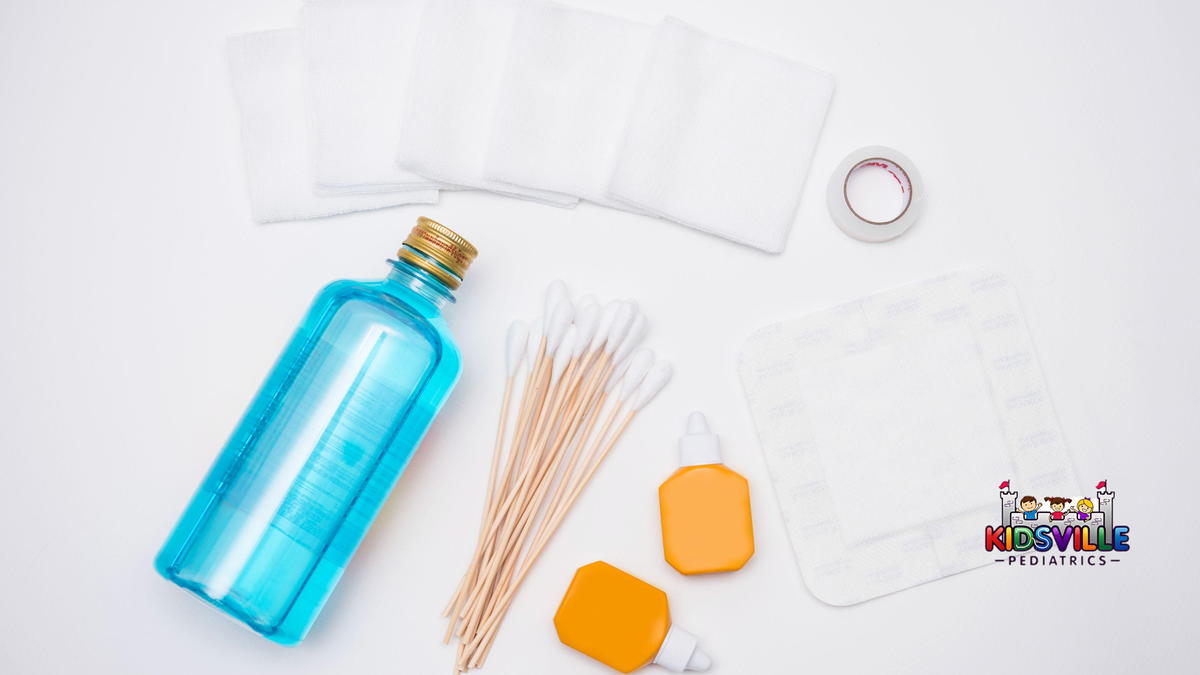
Prevention is key to stopping the spread of impetigo, especially in places where children are in close contact with each other. Here’s how you can help protect your child and others from getting impetigo:
Teach your child good hygiene: Encourage your child to wash their hands regularly with soap and water, especially before eating or touching their face.
Cover any sores: If your child has any cuts, scrapes, or open wounds, make sure they’re covered with a clean bandage.
Avoid close contact with infected individuals: Make sure your child does not come into close contact with others who have impetigo.
Clean wounds promptly: If your child gets a scrape or cut, clean it immediately with soap and water and cover it with a clean bandage.
At Kidsville Pediatrics McKinney, we can guide you on the best prevention strategies and provide advice on managing impetigo in your child.
When to Call Kidsville Pediatrics McKinney
Although impetigo is usually mild, there are situations where you should contact your pediatrician for advice. Call your doctor if:
The infection seems to spread quickly or affects a large area of the body.
The sores become painful, swollen, or filled with pus.
Your child develops a fever or appears very ill.
The infection doesn’t improve with antibiotics after a few days.
Kidsville Pediatrics McKinney is here to ensure your child receives prompt and thorough care.
Click to Schedule An Appointment. Or visit/call our clinics: Kidsville Pediatrics Mansfield TX: 682-341-3910; 1759 Broad Park Circle S, Suite 201 & 205, Mansfield, TX Kidsville Pediatrics Southlake: 682-345-8010; 2813 W. Southlake Blvd Suite 100 Southlake, TX Kidsville Pediatrics McKinney: 469-885-9400; 5881 Virginia Pkwy. Suite 300 Mckinney, TX |
